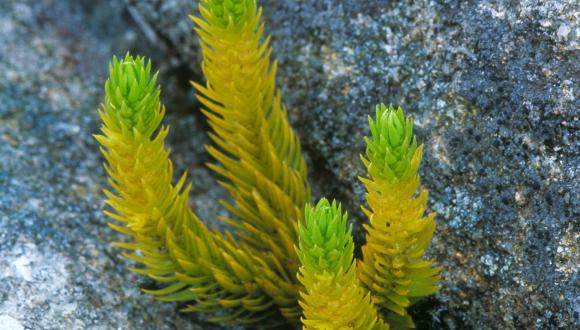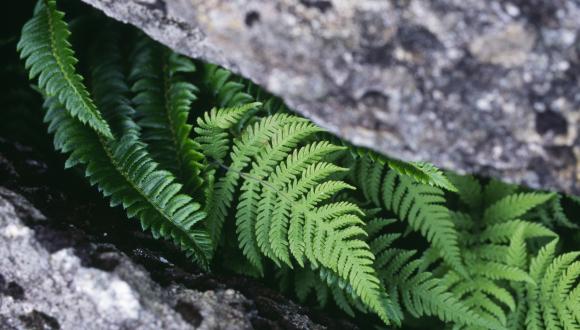Mosses and liverworts
Scotland is internationally important for these tiny plants, which carpet our woodlands and form our peat. We have nearly 1,000 species.
Mosses and liverworts are tiny plants that produce spores instead of flowers and seeds. Mosses and liverworts do differ, but they share enough important characteristics to be known collectively as bryophytes.
Around since before the dinosaurs, mosses and liverworts find the ideal conditions in Scotland, with its diverse landscape and cooler climate. Despite their small size, our 977 moss and liverwort species play a hugely important role in the health of our environment and how it functions. This is due to Scotland's diverse landscape and a climate influenced strongly by the Atlantic Ocean. Relatively warm winters and cool, wet summers, especially on the west coast, provide perfect conditions for these little plants.
A huge variety of mosses and liverworts festoon the woodland floors and tree branches of our western oakwoods. Fragrant liverworts may impart a sweet and peppery perfume. Bryophytes provide homes for tiny woodland creatures. Together, they also act as a giant sponge, slowing the flow of rain into burns and rivers, and helping to protect against flash floods.
At an even larger scale, mosses are the building material of Scotland’s vast areas of blanket bog. Peat formed from the remains of dead mosses, chiefly sphagnum mosses, has provided an important source of fuel for Highland communities. More importantly, we now know that mosses can lock up huge amounts of carbon in peat, making them vital to carbon management.
Scotland’s west coast mountain slopes are home to an important community of bryophytes called oceanic heath or Scottish liverwort heath. This type of heath is rare outside Scotland, which gives us a special responsibility to protect it from damage due to burning and other threats. One species, the delicate Northern Prongwort, is known from only one site on Earth, the Beinn Eighe National Nature Reserve. Luckily it is abundant and well protected here.
Threats to mosses and liverworts
Some of the greatest threats are the:
- loss of undisturbed habitats through land-use change
- swamping out of many important woodland species by the highly invasive non-native shrub, Rhododendron ponticum
Protection of mosses and liverworts
Some moss and liverwort species are rare and run the risk of decline or extinction if we don’t manage our environment properly.
All wild plants are protected species to some degree. A number of mosses and liverworts that occur in Scotland, including green shield-moss and petalwort, have added protection.
Discover how Scotland’s wild plants and fungi are protected.
Read our guidance for planners and developers.
How you can help bryophytes
- Get involved in recording groups to learn about bryophytes and help us to better understand where they’re found.
- If you own or manage land, locate the important areas for mosses and liverworts, and consider them in your management plans.
- Take care not to let rhododendron and other invasive plants spread from your garden into nearby woodland.
- Take steps to reduce your personal contribution to climate change.
Find out more
Naturally Scottish: Mosses and Liverworts
View our short film on Oceanic ravines: an introduction to their special plants:
Steep wooded ravines in the west of Scotland are beautiful examples of our Celtic Rainforest. In this video NatureScot’s David Genney gives an introduction to the character of these hidden places and to the special plants for which this cool rainforest is so important. The film was also developed as an information and training video to help hydro developers better understand the potential impacts of water abstraction on an internationally important assemblage of mosses and liverworts.
Credit: NatureScot





